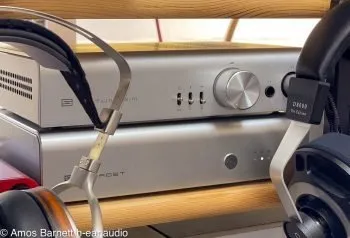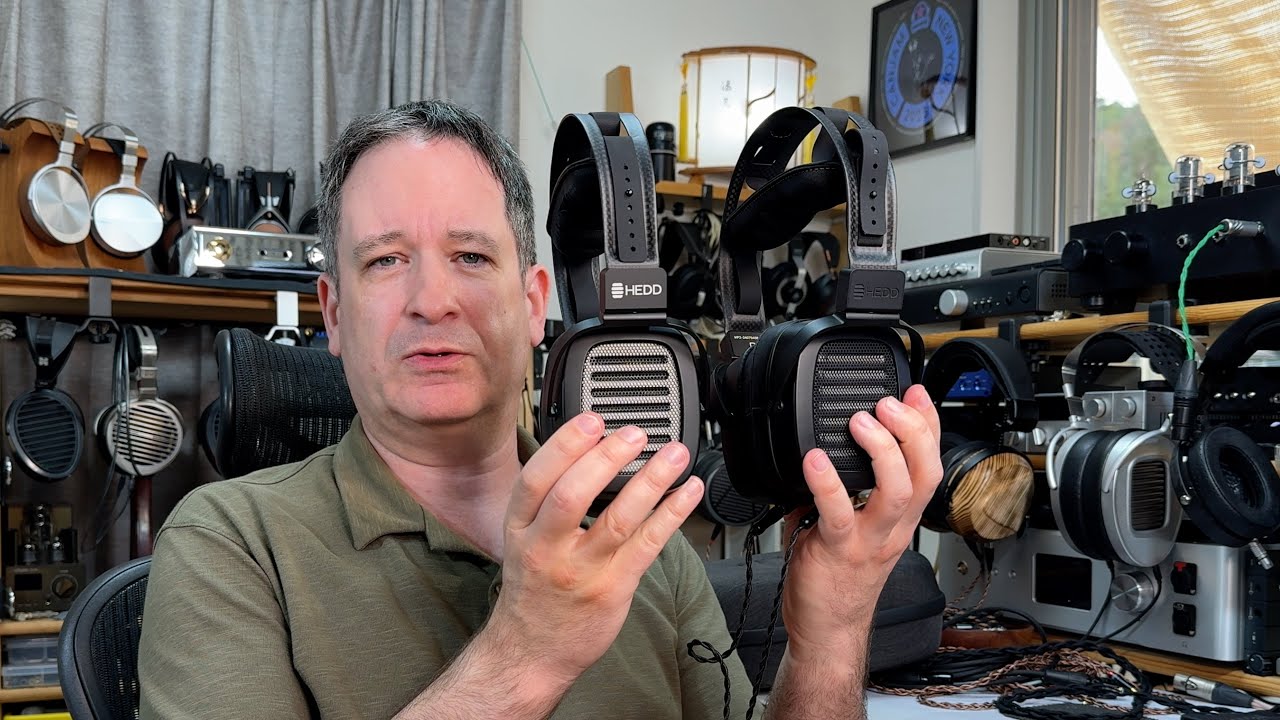
I have every reason to feel bad right now. Under normal circumstances, I might feel good, as I have finally gotten around to reviewing Schiit Audio’s Jotunheim, the prototype for what became the original I saw on Jason Stoddard’s desk some years ago during a factory visit. However it, along with the Vali 2+, is backordered by some weeks at present, so I feel guilty pressing Jason and crew to send me one.
Under normal circumstances, we might have met at a show and chatted, then sorted something out, and we wouldn’t be under a pandemic-induced parts shortage. I always request b-stock, because I don’t like to take away from customers being able to buy things wherever possible.
I also feel a bit bad as my video reviews for Schiit products tend to be short. Maybe that’s because they tend to be quite simple and straight-forward, and there isn’t a great deal to say about them. That contrasts with the effort made by Jason, Mike and crew to create them. One could say that they have mastered the creation of audio simplicity.

Design
We think of products in terms of what we see on the outside and the basics of what we know about them. With the Jotunheim 2, that means RCA and XLR inputs (or the optional DAC module) and a 6.3mm (1/4″) and 4-pin XLR output. Switches for the input, two gain levels and the pre-amp output are present next to the volume control on the front (a 4-gang ALPS Blue) marked by almost hieroglyphic-like symbols rather than words.
I hold hope that, in the future, Jason considers adding a 4.4mm socket as well, though considering how much Pentaconn charges for them, and Jason’s statement that they wont be raising prices because of the pandemic, that might be a while.
Finally, as usual, a bright white LED that someone at the factory with ninja skills has carefully aligned with a tiny hole in the front of the chassis, something that challenged me when I had to replace the top cover after taking it off for photos.
As simplicity of the design has always taken precedence with Schiit Audio products, none the less in the stamped steel and pressed aluminium which makes up the chassis. As time has gone on, subtle but noticeable changes have been made to the chassis design, the latest seeming to be that the front of the volume knob has more noticeable concentric circles milled into it, and is push-on, rather than affixed with a screw as on the Lyr 3 they sent me some time back.
The power switch, however, much to the annoyance of many, is still on the back. Unlike the Asgard 3, the gain switch is on the front, and the preamp output is switched manually, rather than by insertion or removal of headphones.
In comparison, the more complex Drop THX AAA 789, with which the Jotunheim competes has a custom balanced design of the otherwise non-balanced THX circuits. The Jotunheim 2 is simpler, being balanced all the way through, albeit with the option for single-ended input and output, the latter of which has significant consequences for the power output.

The Jotunheim 2 circuit uses Schiit’s “Continuity” Class AB circuit, which provides linear power delivery even when power output pushes the amp out of Class A and into Class AB. For a balanced circuit to work properly requires matched transistors, normally requiring arduous matching of sets during manufacturer, and is thus only offered by high-end manufacturers who are willing to spend the time to test each individual one. Schiit, however, has managed to do achieve this more efficiently, as factory matched single-component pairs have become available. Having pre-matched pairs sold as a single unit, the transistors can be directly installed in circuits without the need to test them first.
In Use
The Schiit Audio page for the Jotunheim states that it is “whisper-quiet on even the most sensitive IEMs.” so I decided to put it to the test with a pair. I happened to have a pair of Campfire Aras to hand which are presently committing a form of “manufacturer infidelity” attached, as they, to a 4.4mm FINAL cable. With these, in low-gain mode I had a slight amount of hiss in both channels, noticeable playing quieter music.
I seemed to get worse results using the single-ended output, which was slightly unexpected. A significant ground-loop type hum and hiss came through, making it unsuitable. This is partially due to the Aras being extremely sensitive. With less sensitive IEMs it wasn’t so much of a problem.
IEM issues aside, with full-sized headphones the Jotunheim 2 carries on the same “house sound” as the Asgard 3 with a warm and engaging signature that isn’t as wide as a higher-end amp, but presents a degree of depth with good 2-channel recordings. Compared to the Asgard 3, even the single-ended output of the Jotunheim brings out a greater degree of detail and clarity, the Asgard 3 sounding slightly veiled in comparison.

With the Multibit DAC card the Asgard 3 was a nice package that makes for good enough listening, such that jumping up to a Bifrost at $500 more almost seemed like overkill. With the Jotunheim 2, the multi-bit card was definitely holding the amp back. Going from the multi-bit card to the Bifrost 2 seemed like about as big an upgrade as going from a smaller Schiit headphone amp and DAC stack to one of the larger pairs, the Bifrost presenting a much clearer soundstage and noticeably more detail.
I decided to compare the Jotunheim 2 with the popular Drop THX AAA 789. I fed the Jotunheim 2 from the XLR outputs of my Schiit Yggdrasil, and the AAA 789 from the RCA outputs. This would reduce one conversion stage within the THX AAA 789 as it converts the balanced input from the XLR inputs into an unbalanced signal within the amp.
Using Spanish Fly by Van Halen as an example track, the THX AAA 789 did a very capable job keeping up with the speed of Eddie Van Halen’s playing, even in high gain with HiFiMan’s demanding Susvaras, played at around the 80dB level. Switching to the Jotunheim 2, the guitar plucks had more body, and the Schiit amp seemed to better express the decay of the plucked notes as they faded away, resonating within the guitar. Simply put, the Jotunheium 2 seemed to bring out more of the music in the music.
Schiit Audio’s own Lyr 3 has been one of my favourite amps since I first tried it. While it was sent with a good Tung Sol tube (IIRC a $25 option) I replaced that with a Russian “MELZ” 6SN7, for its slightly sharper character. With the same Continuity circuit design, it provides a lively listen, if one that is a bit forced — a bit too deliberate in its character.
Switching from the entertainment of the Lyr 3, the Jotunheim 2 is more relaxed, delivering the music more effortlessly, rather like how Yuko Mabuchi glides smoothly through On Green Dolphin Street (Yuko Mabuchi Trio (Live)) where the sharpness of some of the piano notes were delivered by the Jotunheim 2 without hesitation.
The effect through Final’s D8000 Pros was delicious, the relative neutrality of the headphones allowing the character of the system through with a touch more ease than when using the Susvaras. Louder, sharper notes still jumped out, with a bit of edginess, like with the Susvaras.

I wondered if the narrower soundstage wouldn’t be a good combination with the Focal Utopias, as they already tended to present something of a narrower, if deeper soundstage. While I can’t say it did any favours to the soundstage, the better depth to the sound compared to the THX AAA 789 was welcome.
Combined with the Bifrost 2, which is a touch on the warm side of the more neutral Yggdrasil, and likewise a touch less spacious-sounding than it’s bigger digital brother, the sound of the pair comes across in a way that reminds me of old-school big-paper-cone speaker hi-fi of the 80’s — warm, punchy and fun; a contrast to the bright, “hi-fi” sound that began appearing in the 90’s with metal and Heil tweeters, and the “clear but flat” sound of low-SINAD-focussed products from THX, SMSL, Topping and others. It harks back to a time when we listened to music, and not to equipment.
For pre-amp duties, as my Audio-gd Master 10 amp is on a different rack, I have two long, 4m lengths of Litz-wire interconnect that Trevor of Norne Audio very kindly, and extremely tediously braided for me some years back. The Jotunheim 2 was hooked up with one pair to the Audio-gd amp and switched back-and-forth to the Yggdrasil direct. While not allowing an instant A/B comparison, I feel that listening to whole tracks was more helpful in evaluating differences ultimately, and level-matching was still possible.
It was little surprise that, as a pre-amp, the same qualities that the Jotunheim 2 has as a headphone amp came through, with a similar warm, and less of a wide soundstage than I get using the Yggdrasil direct to the Master 10. While taking away a touch from the direct signal, the Audio-gd Master 9 headphone amp, used as a pre-amp, was more open and resolving in what it passed through, the music coming through more effortlessly.
For example, on the bigger amps, such as the Audio-gd Master 9 and ALO Audio Studio Six (at 10x the price!) the instruments from the above-mentioned Yuku Mabuchi all have their more distinct space in the mix and the space of the recording venue is more clear. The louder notes don’t have the edginess that they did through the Jotunheim, and the music flows more effortlessly, as if the amp isn’t there. In comparison, music through the Jotunheim 2 sounded more forced and deliberate, much as the Lyr 3 does in comparison to the Jotunheim 2.

In Conclusion
While not the clearest or most resolving amp I’ve used, the punchy, warm sound from the Jotunheim 2, when combined with a good DAC, makes for great listening enjoyment with all types of headphones, even those that are hard to drive, and is unarguably good value.





